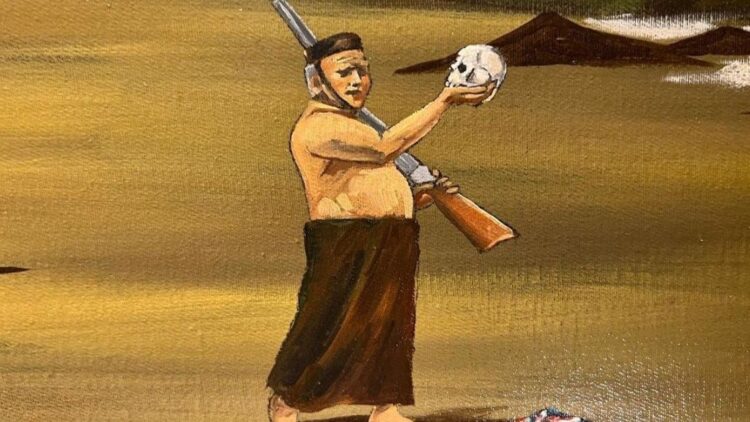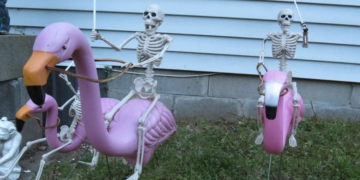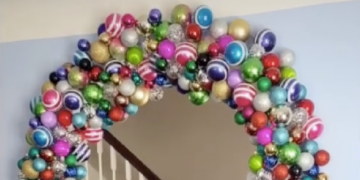The question of who, if anyone, can ever truly own a piece of art has been waged for centuries. Some say that the owner is the one footing the bill, while others will argue that to own art is like owning the air.
Recently, this debate has breathed new life after a Maori artist/activist named Tāme Iti , walked into the QT Hotel in Wellington, NZ, and defaced a painting wherein his name was spelled incorrectly. Was he justified in doing so or was this just a petty act of vandalism?
Pretend for a moment that Vincent Van Gogh was alive today.

Let’s imagine him walking through the doors of the Museum of Modern Art in New York City to see his painting, “Starry Night,” hanging on the wall.
Upon gazing at his work for a few minutes, Vincent becomes disgusted with what he sees.
It’s a little-known fact that Vincent painted “Starry Night” while he was recovering from mental illness and self-inflicted ear amputation. Furthermore, he always thought of the painting as a failure.
In an attempt to rectify his past mistakes, imagine now that van Gogh pulls a brush from his jacket pocket and begins to paint over his perceived mistakes.

Should he be allowed to do this? He is the artist, after all, but does the painting truly belong to him anymore? The answer, of course, is no.
Now imagine that the vagrant from Picasso’s “The Old Guitarist” springs to life.
What if he didn’t approve of the manner in which he was depicted? Should he be able to make edits and quick fixes so as to better represent himself? He is the subject of the painting, after all, and without him, it wouldn’t exist in the first place.
The answer of course remains the same — an assured and steadfast, “no.”

Once a piece of art has left the artist’s studio, they relinquish all ties to it. The same goes for the subject of a painting, portrait, or sculpture.
I raise these hypothetical questions because of the actions of New Zealand artist/activist, Tāme Iti.

In September 2021, Iti walked into the QT Hotel in Wellington, NZ, and corrected a misspelling of his name on a painting done by artist, Dean Proudfoot.
In the bottom left-hand corner of the painting, Tāme was misspelled as Tama.

After taking a moment to survey the work, Tāme pulls a small brush from his pocket, along with a bottle of red paint. He then proceeds to scratch out the artist’s spelling, replacing it with his own.
The owner of the painting, Chris Parkin, was far from amused.
“As far as I’m concerned it’s straight-out vandalism,” Parkin told Stuff . No different to someone placing graffiti on a building they don’t own. I expect the police to prosecute him .”
Parkin argued that if he were to walk into Te Papa, New Zealand’s national art museum, and deface a painting — he would be charged without hesitation.

However, the artist behind the painting, Dean Proudfoot, seems to feel otherwise.
“There was no offense intended,” Dean said. “It was a clear lack of research on my behalf.”

Dean was also quick to remind the 1News media outlet that the whole purpose of this series was to celebrate Aotearoa New Zealand’s unique characters.
“Tāme is the epitome of what makes our country special,” Dean explained.
“What Tāme has done in ‘correcting’ it, has given the work a new life with a far more powerful meaning . It has been elevated. I thank him for that and from what I’ve learnt[sic] as well.”
Over the years, Tāme has become well-known for this kind of controversy.

Iti once pitched a tent inside New Zealand’s Parliament building and declared it the Embassy of the Maori — the indigenous Polynesian people of mainland New Zealand.
Then there was the time when he shot the national flag in front of a group of government officials.

And who could forget that curious period in time when he would walk around with a ladder in order to speak to members of parliament face-to-face while they were on stage.
“No one can tell you that you are not important and your experience does not matter,” Iti would say.
“And if they do… I challenge them to say it to your face … where they can see your eyes and feel your breath.”
So is Tāme a vandal, a folk hero, or something else entirely?
Perhaps it isn’t for us to decide. All I know is that if you’re looking to avoid a similar situation to the one that transpired in the QT Wellington, you’d better spell his name correctly.



















































